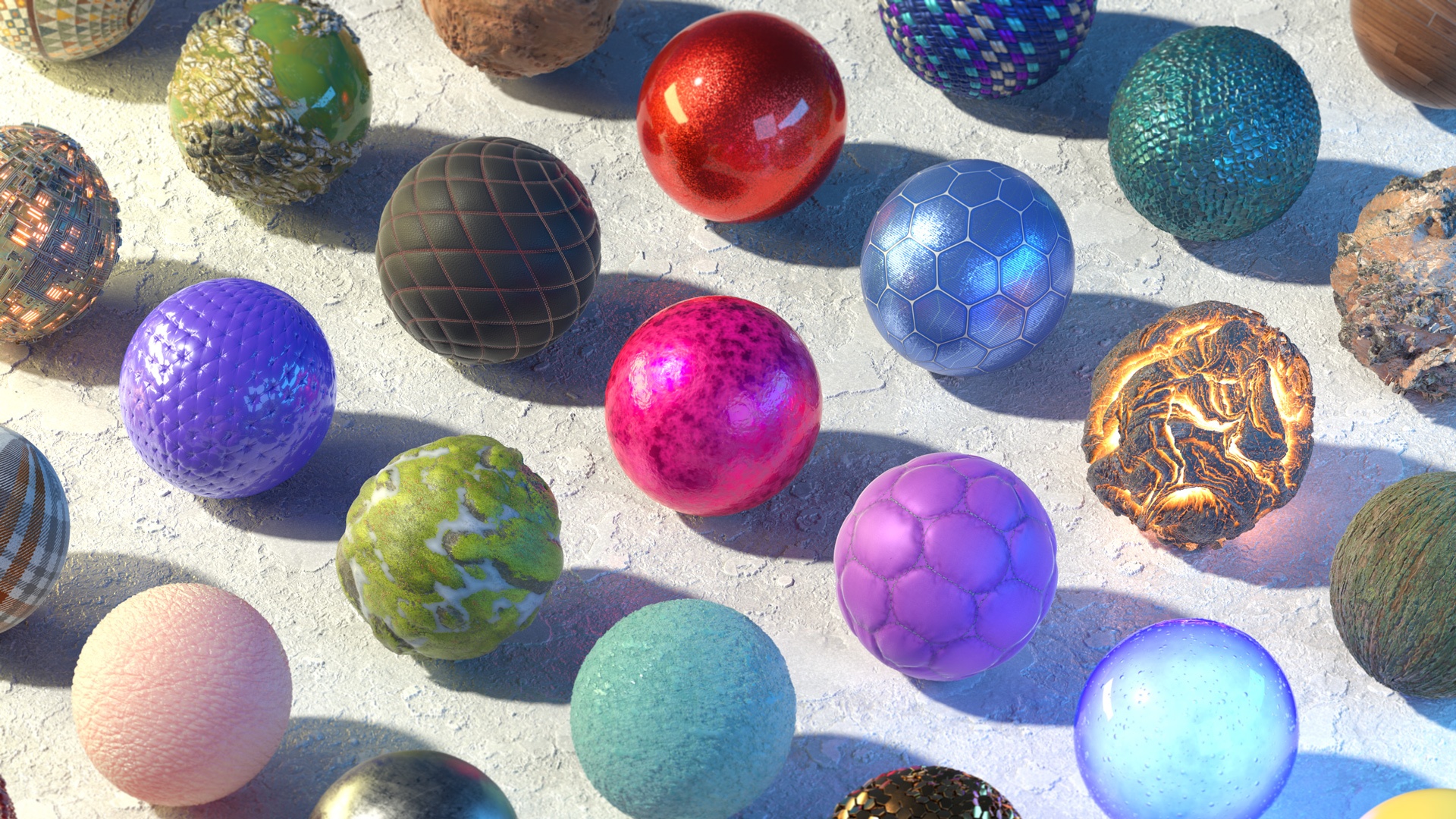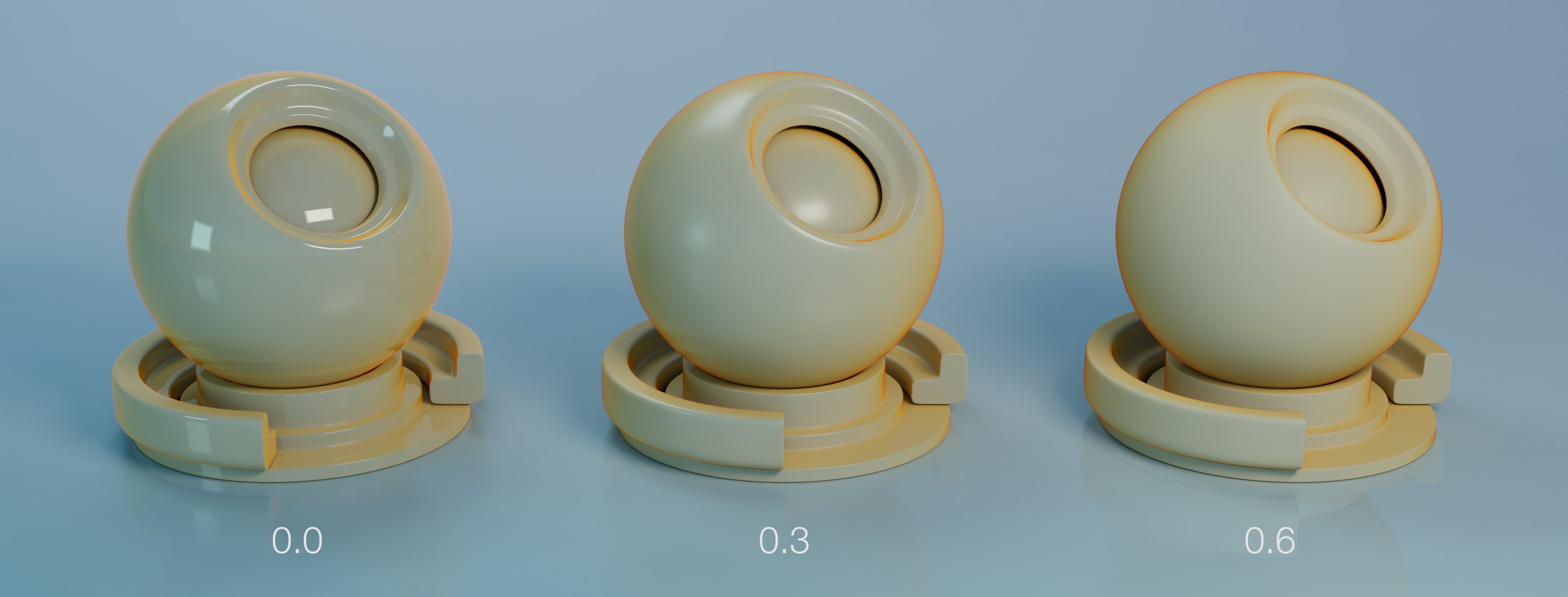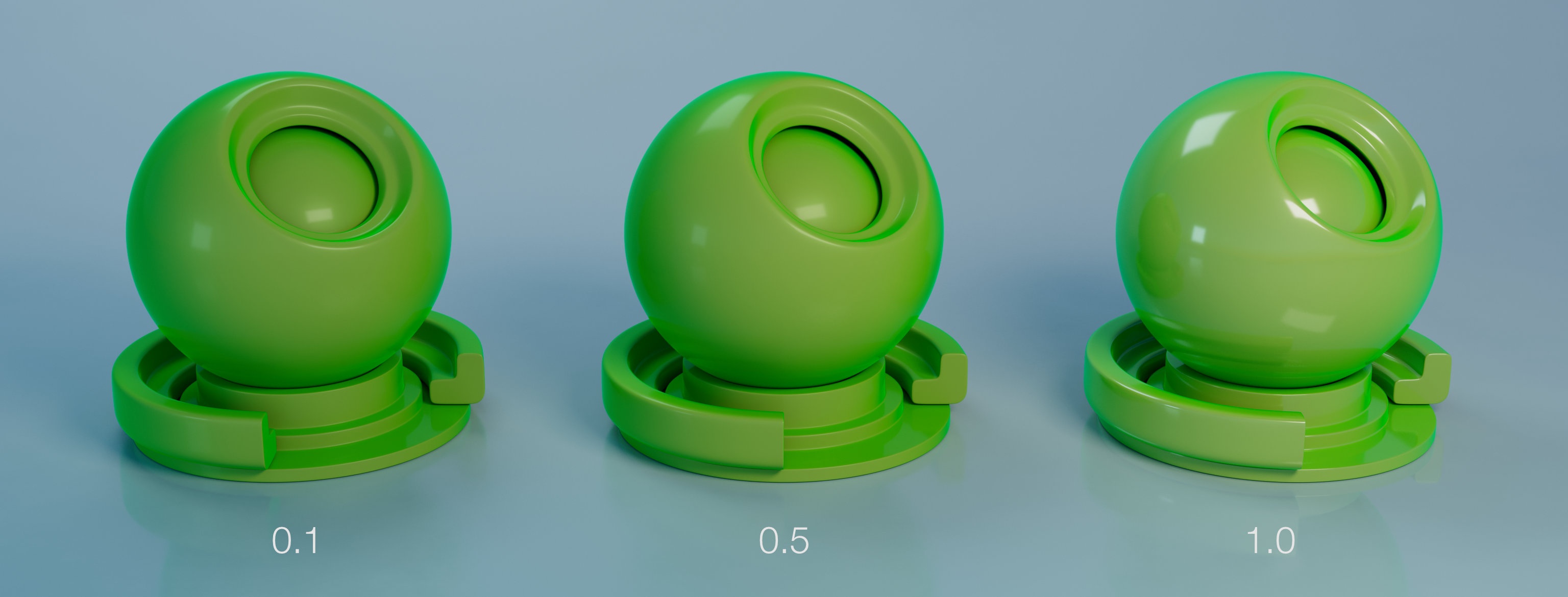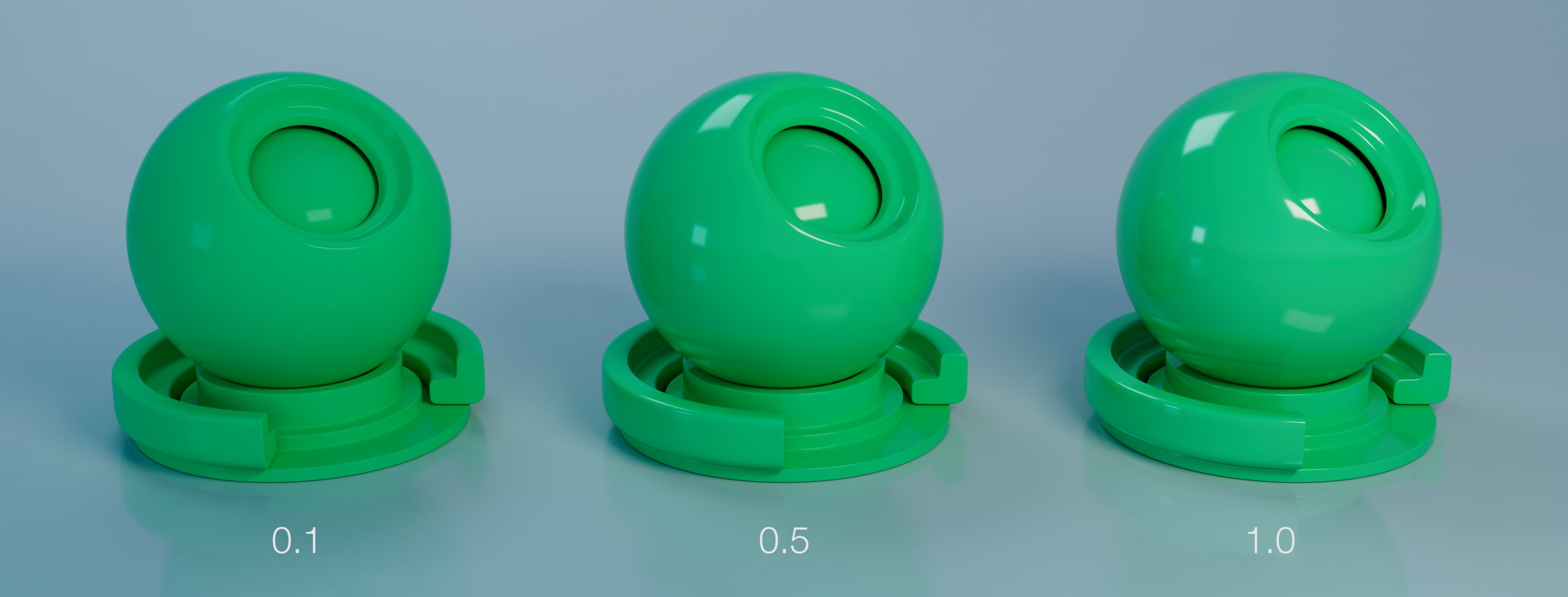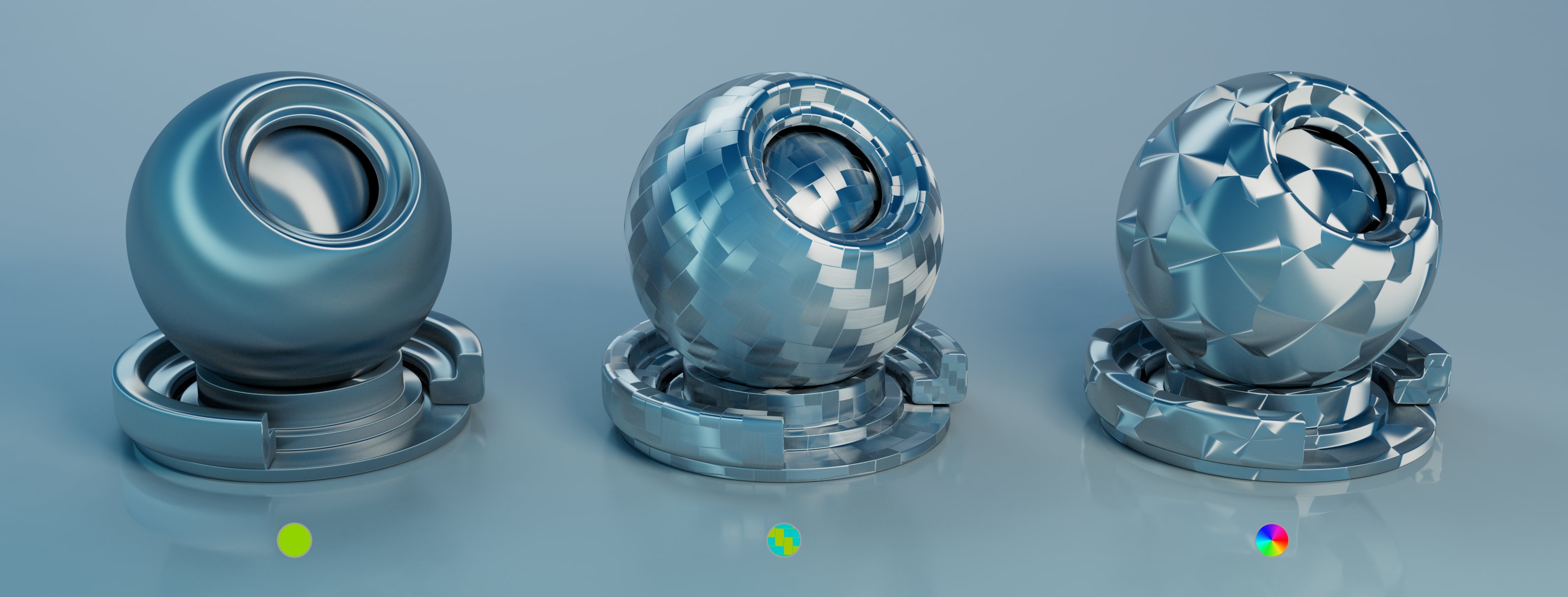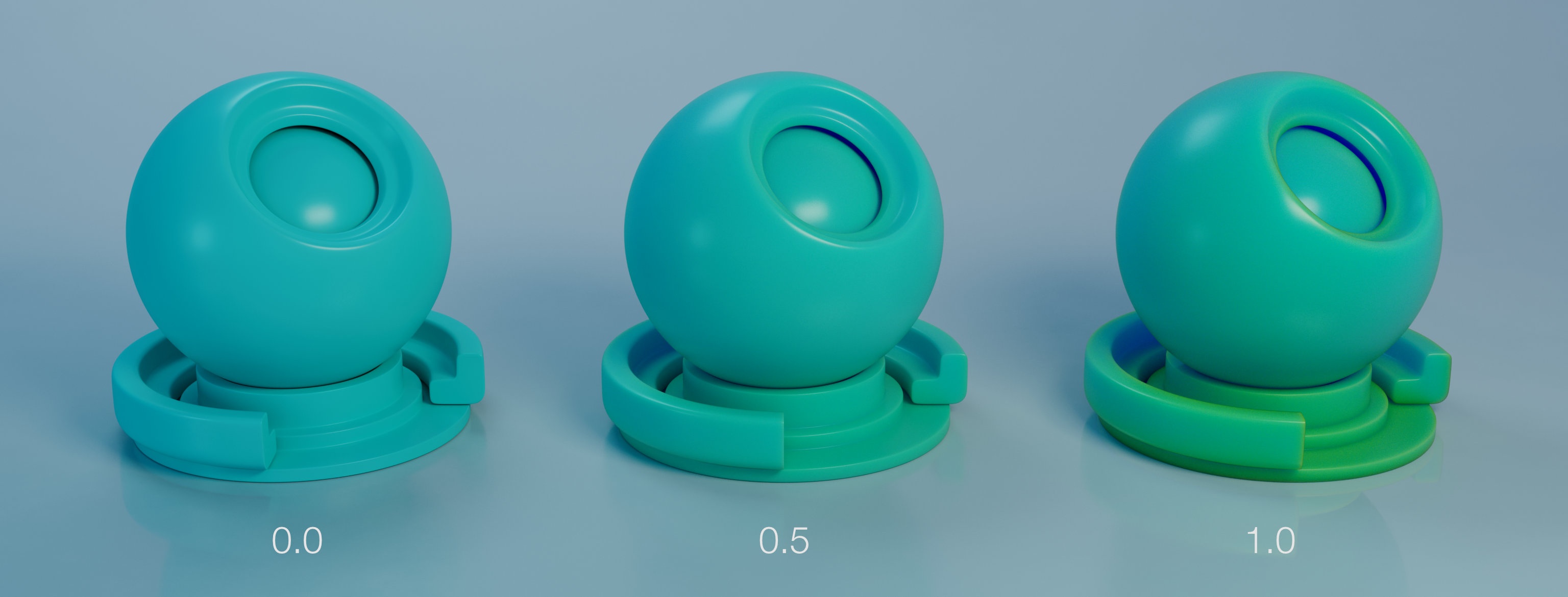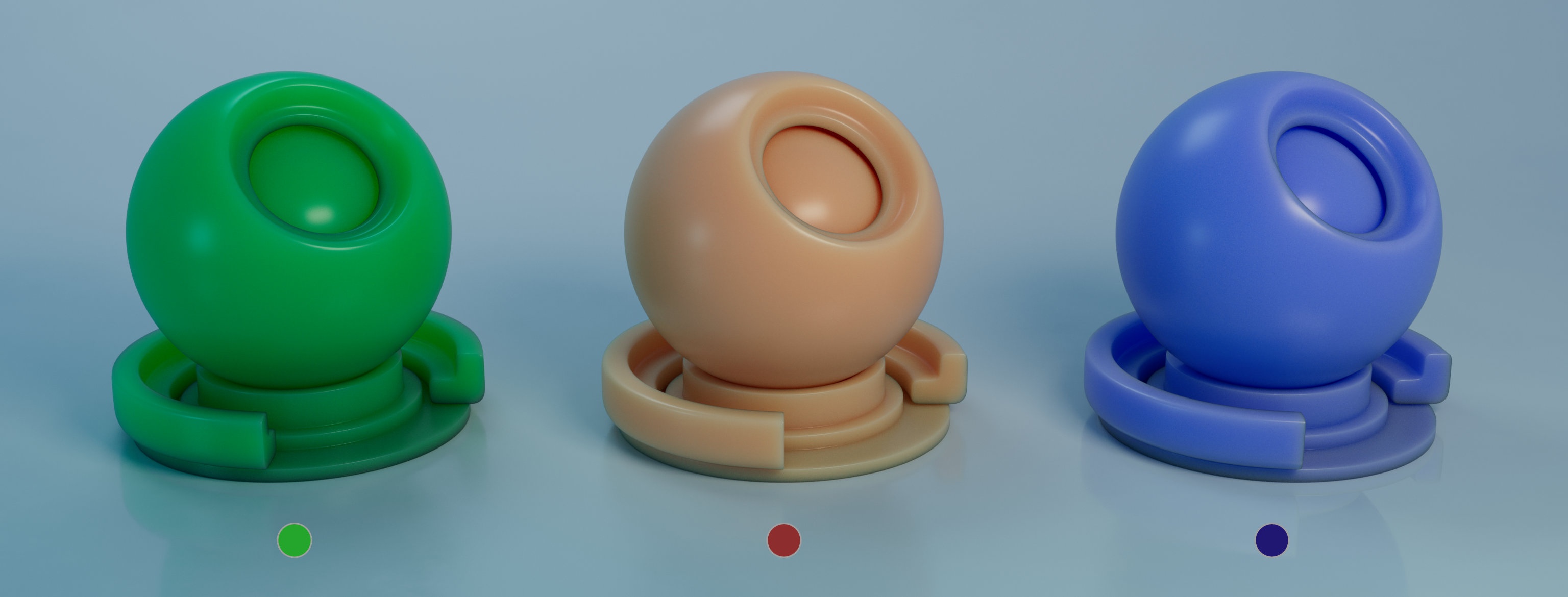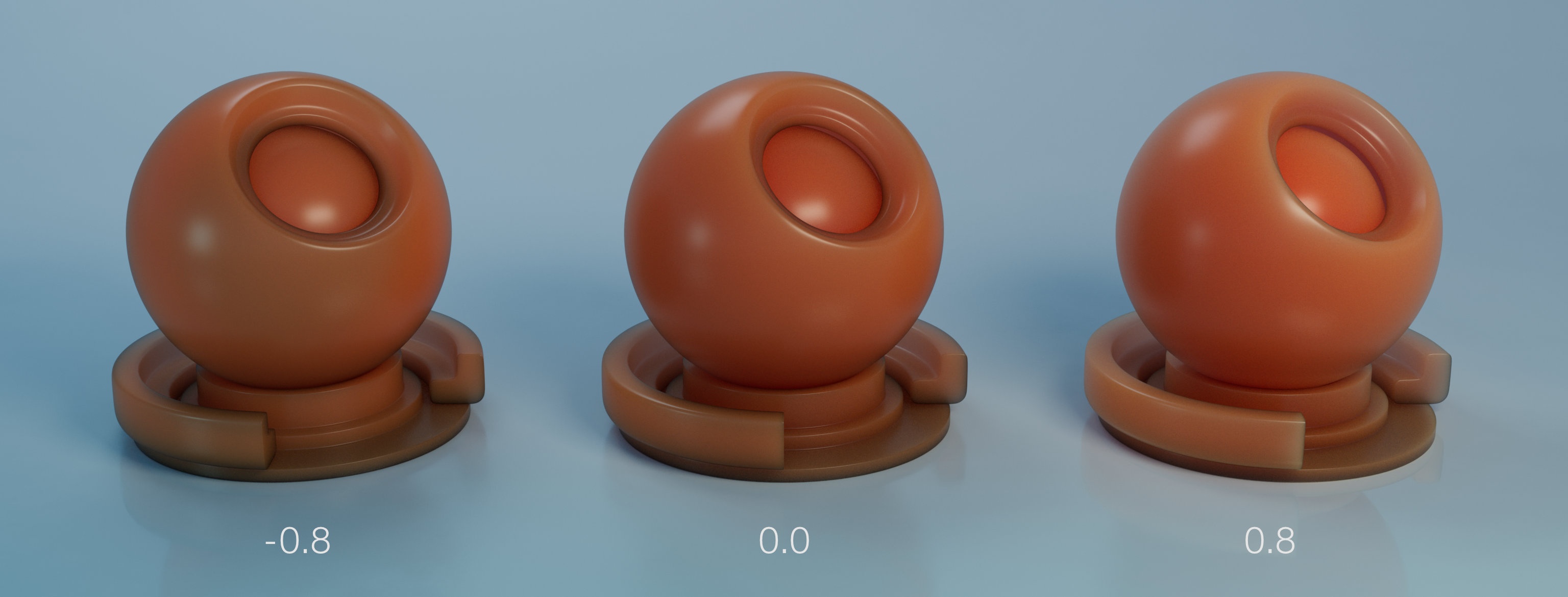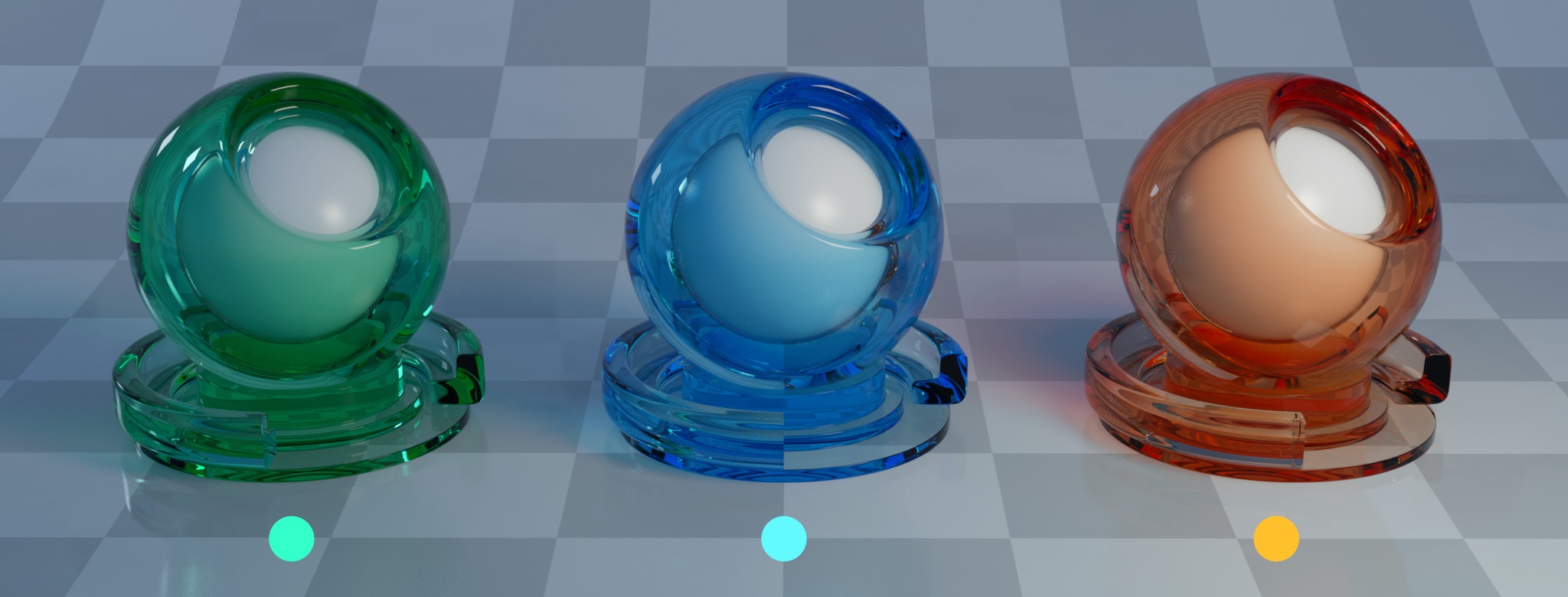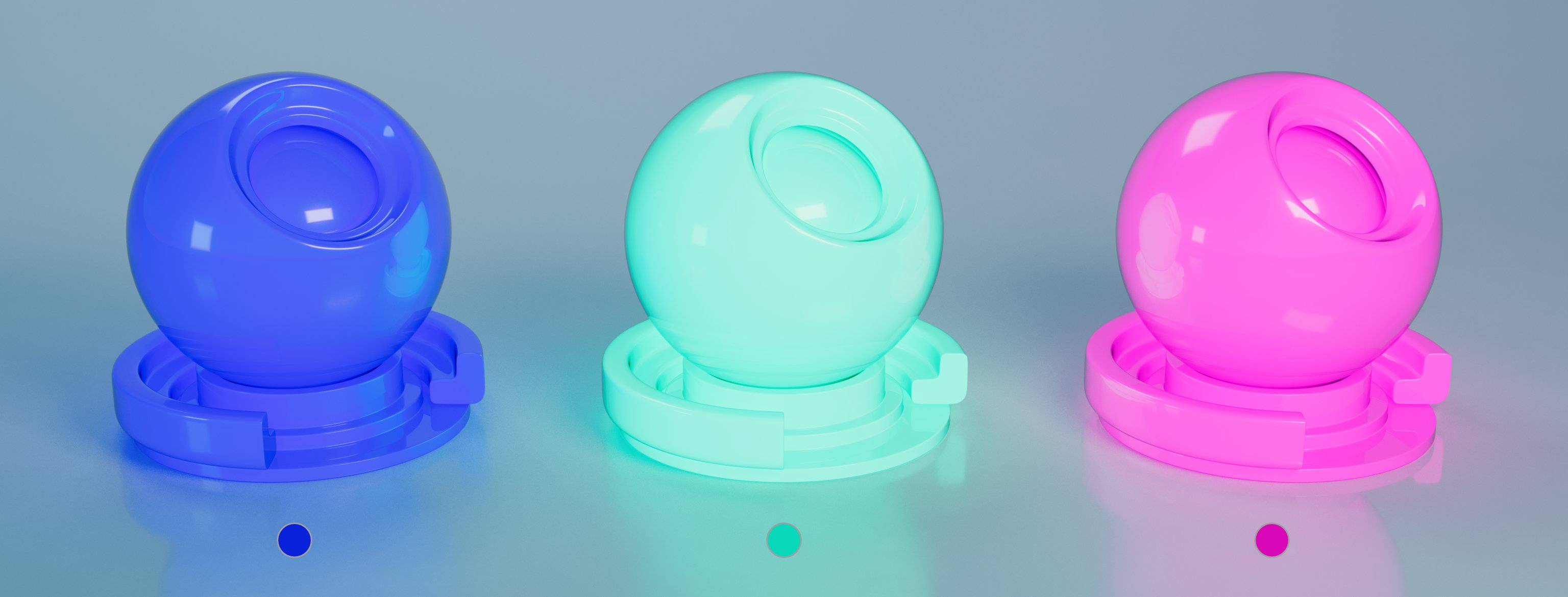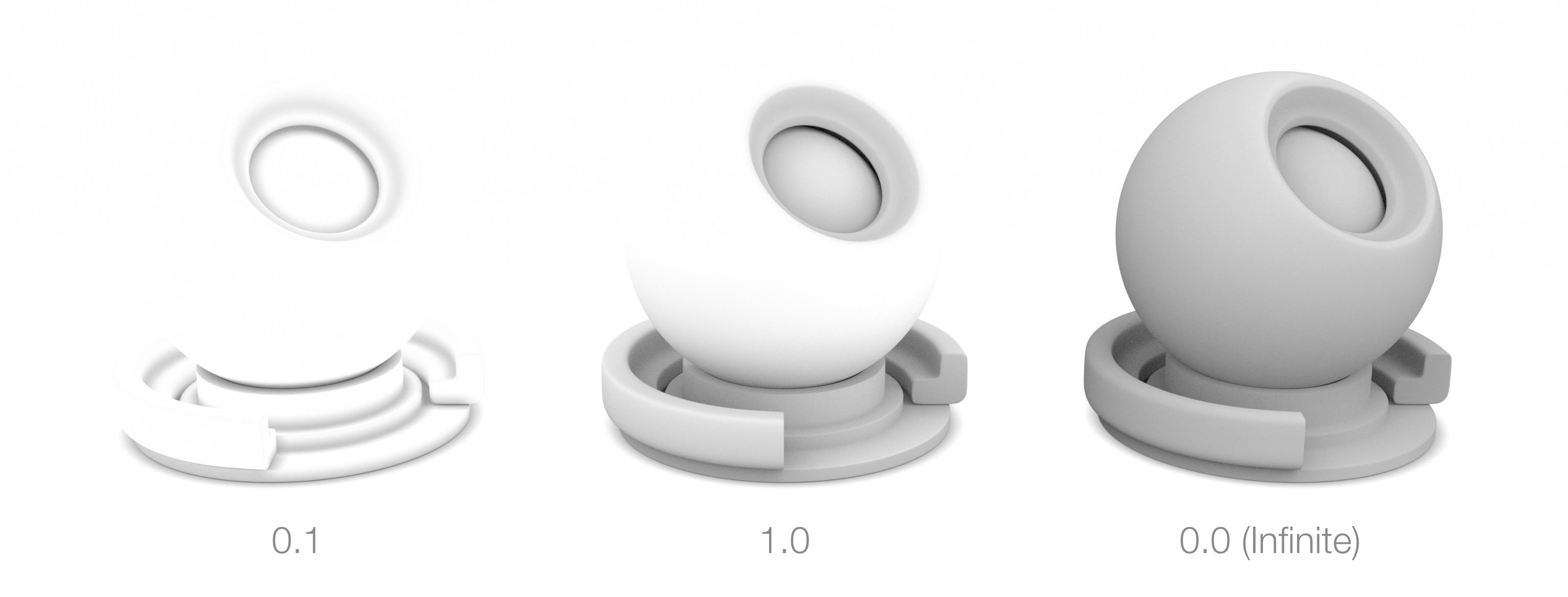The 3Delight Principled material is our interpretation of Disney's
...
"principled" BRDF1. Quoting from this reference, our principled material adhere to these principles:
- Intuitive rather than physical parameters should be used.
- There should be as few parameters as possible.
- Parameters should be zero to one over their plausible range.
- Parameters should be allowed to be pushed beyond their plausible range where it makes sense.
- All combinations of parameters should be as robust and plausible as possible. We thoroughly debated the addition of each parameter. In the end we ended up
...
...
3Delight Principled
...
shader has more than the 11 parameters listed in Disney's reference in order to offer more control on the coat and also has subsurface parameters.
1 The reference document entitled "Physically-Based Shading at Disney" by Brent Burley is available for download here (as a PDF).
Coating |
|---|
Coating
...
Coating
Coating is an important part of a car paint as it affects the overall look in three main aspects:
- It provides a richer specular response to light as it adds a specular highlight on top of the base surface's highlight.
- It can colour light as it passes through the coating.It contains metallic particles (a.k.a flakes) suspended inside the coat.
→ Thickness
The thickness of the coating layer. The thicker the layer the more it absorbs light and the less of the base layer is visible. A thickness of 0 disables the coating the coating.
Color
The colouring producing by this coating layer. Colouring will be more prominent in thicker layers.
Roughness
Roughness of the coating layer.
→ Specular Level
How "shiny" is the coating. A value of 1 means a very shiny coating.
Base |
|---|
→ Color
The colouring producing by this coating layer. Colouring will be more prominent in thicker layers.
→ Roughness
Roughness of the coating layer.
...
Normal Map / Bump
...
* References
...
Color
The colour of the base layer.
Roughness
The roughness of the base layer.
Specular Level
Controls the strength of specular reflections on the base layer.
Metallic
Reflect AOVs
Anisotropy
Anisotropy Direction
Opacity
Subsurface |
|---|
Weight
Color
Scale
Anisotropy
Merge Set
When two or more subsurface volumes overlap, their internal boundaries can create darker (or brighter) areas on the surface. Setting their Merge Set to an identical name disables those boundaries and their effect on the surface, effectively merging the volumes together.
Dominant Material
When two or more subsurface volumes overlap, a mix of their properties will normally be used inside their intersection. Checking this option for one of the materials will prevent this mixing and ensure it's used exclusively.
Double-Sided
Allows the SSS simulation to be entered and exited from the front or the back of a surface. When this option is disabled (the default), the simulation is entered only from the front and exited only from the back.
Refraction |
|---|
Color
Scattering
IOR
Roughness
Density
Incandescence |
|---|
Color
Colour of the emitted light.
Intensity
Intensity of emitted light. Final colour is Colour * Intensity.
Bump / Normal / Displacement Map |
|---|
| Include Page | ||||
|---|---|---|---|---|
|
Geometry |
|---|
Occlusion Distance
